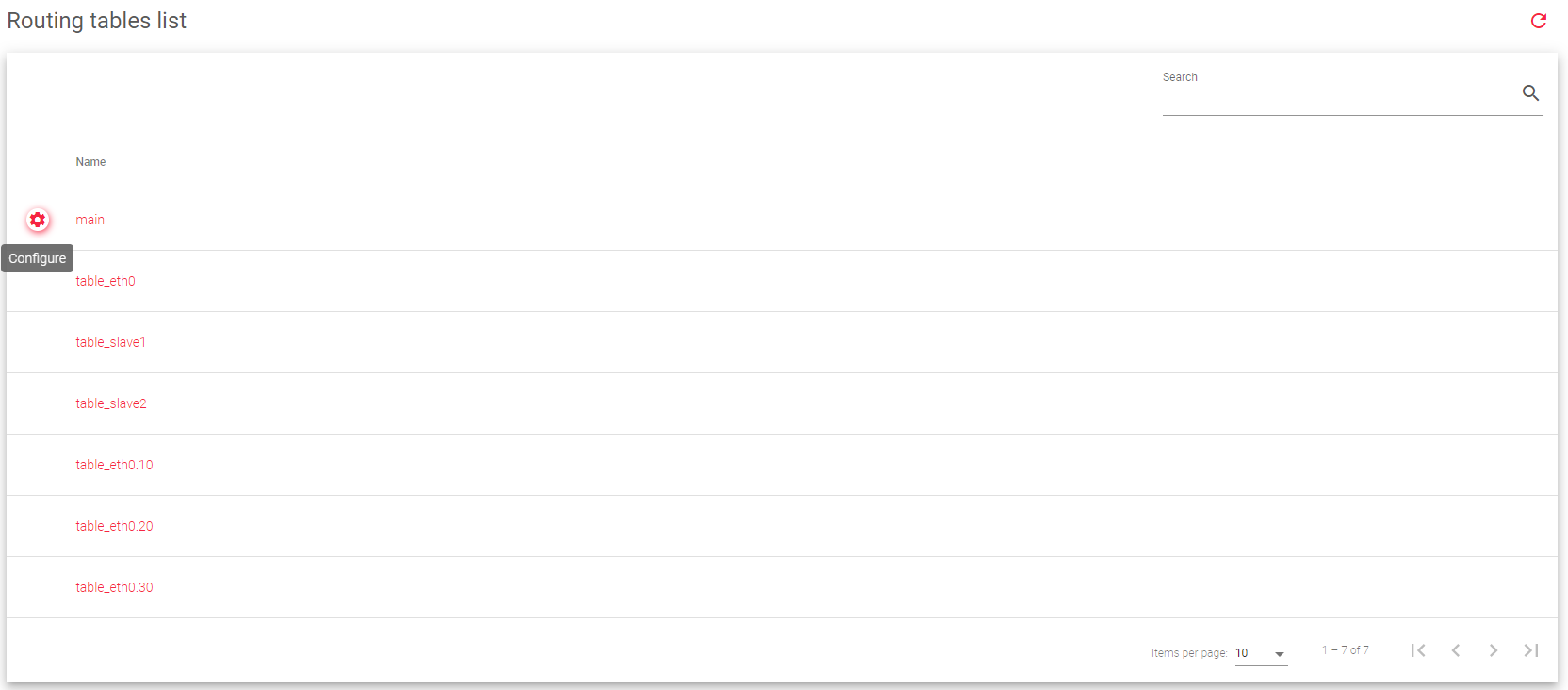In SKUDONET ADC, each routing table knows about the subnets of the ADC’s configured interfaces. This means that the system can forward packets to any destination network through any configured table.
For example, eth0 manages the subnet 192.168.100.0/24, and eth1 manages 192.168.101.0/24. The tables table_eth0 and table_eth1 also know about each other’s subnets.
This means that if a packet reaches a VIP in table_eth0 with a backend in the network 192.168.101.0/24 (reachable through eth1), table_eth0 will forward the packet directly to network 192.168.101.0/24 through table_eth0.
However, if a subnet is not known through any other routing table, then that network may be unreachable through the selected table.
The image below shows a list of all the routing tables that are configured in the system.
Each table has the following properties:
- Name: A unique name for the routing table.
- Configure: An Action button that allows you to configure the selected routing table.
Next Article: Network | Routing | Tables | Configure


